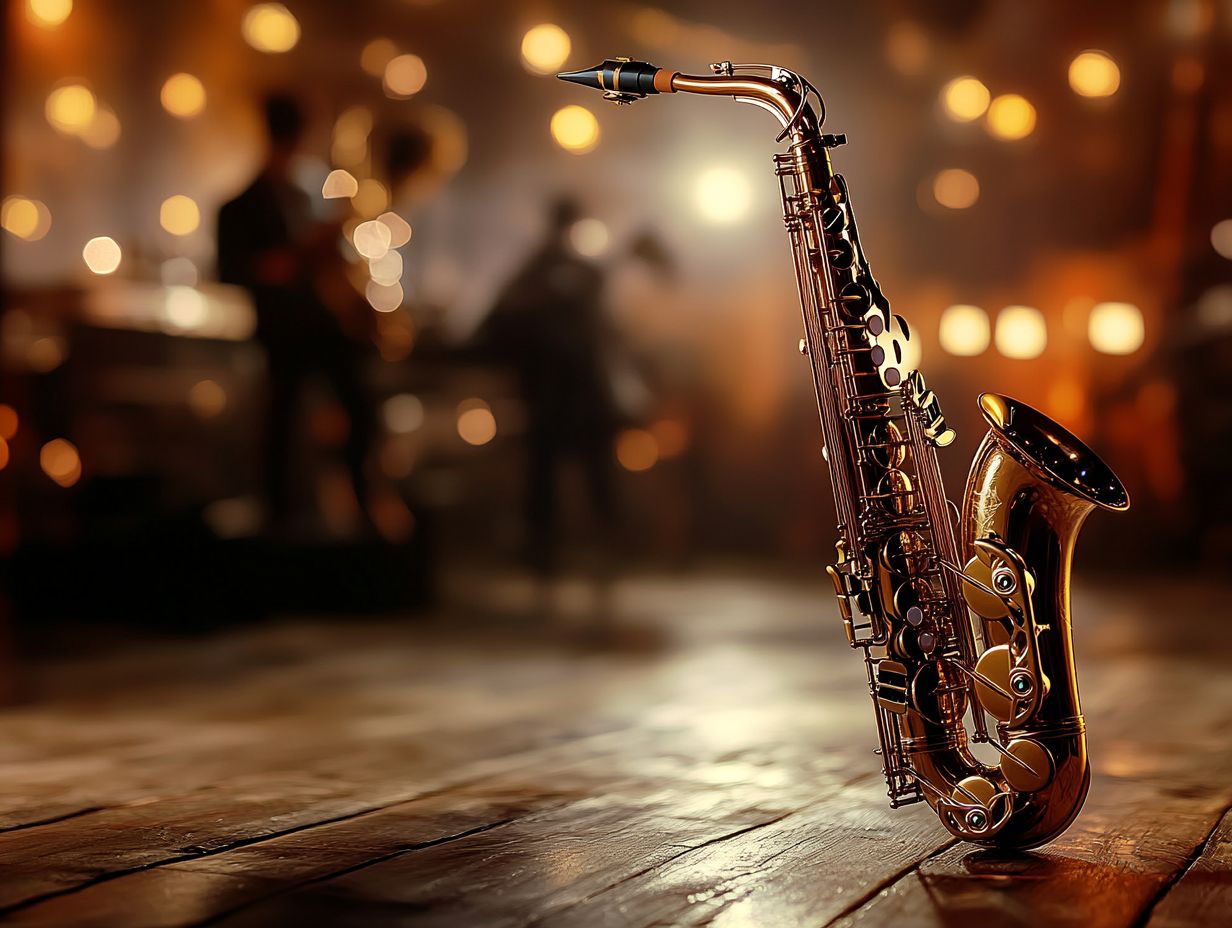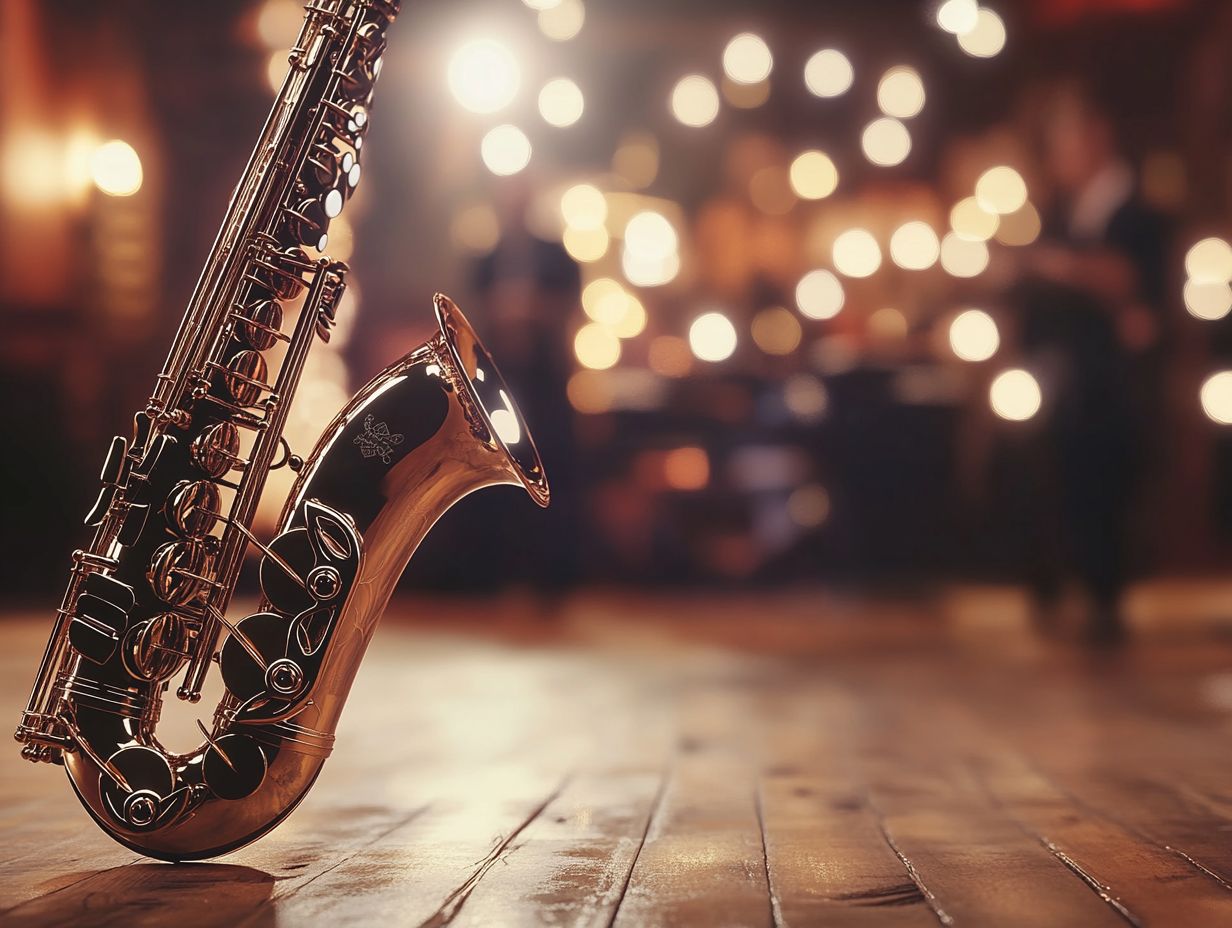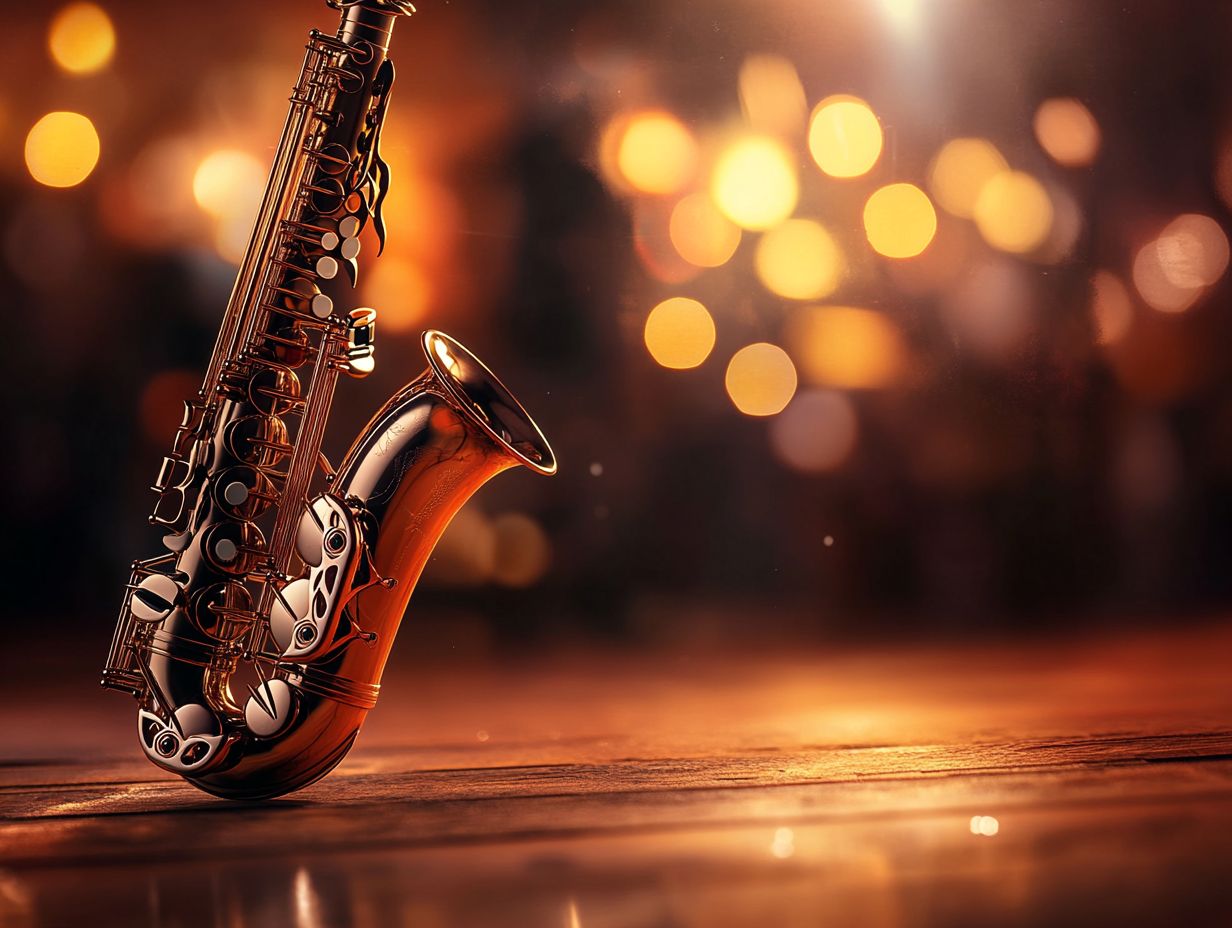The saxophone has become an integral part of jazz, crafting a rich tapestry of sound that has captivated audiences for more than a century.
From its innovative origins to the legendary figures who have shaped its legacy, the profound history and evolution of the saxophone within the jazz genre are explored.
Discover how these instruments have influenced the style and sound of jazz music, the trailblazing artists who defined its path, and what the future holds for saxophones in this ever-evolving musical landscape.
Join us on this journey through the enduring relationship between saxophones and jazz.
Contents
The History of Saxophones in Jazz

The history of saxophones in jazz is a captivating journey that spans over a century, highlighting the instrument’s unique ability to blend seamlessly into various musical genres and its significant cultural impact on American music.
From the soulful melodies of early jazz to the improvisational brilliance of modern ensembles, saxophones have played a crucial role in shaping the history of jazz. Their versatility and expressive sound have established them as a staple in big band performances, bebop, and smooth jazz, all of which have contributed to the evolution of jazz as a form of artistic expression.
This exploration will examine the innovations and influences that have defined the saxophone’s place in the jazz genre.
Innovations and Influences
Innovations and influences surrounding the saxophone have significantly contributed to its prominence in jazz music. This includes various types of saxophones, such as the alto, tenor, baritone, and soprano, each bringing a distinct sound and character to the genre.
Advancements in craftsmanship, including improved key mechanisms and the use of high-quality materials, have enhanced sound quality and playability. As a result, musicians can achieve a wider range of tones with greater ease.
Notable saxophonists like Charlie Parker and John Coltrane harnessed these improvements in their improvisational styles, pushing the boundaries of jazz and inspiring countless artists who followed. Their innovative approaches not only reshaped the way the saxophone was played but also influenced the broader landscape of jazz, encouraging new generations to explore creativity in their performances and embrace the instrument’s unique voice as a staple of modern music.
Famous Saxophonists in Jazz
Famous jazz saxophonists are distinguished not only by their technical proficiency but also by their emotional connection to their art and their ability to convey that connection through music.
Influential innovators like Charlie Parker, John Coltrane, and Miles Davis transcended mere musical creation; they transformed their instruments into powerful voices for their creativity and expression.
Their legacies are now an integral part of jazz history, influencing generations of musicians and shaping the evolution of musical styles.
Trailblazers and Legends

Trailblazers and legends of the saxophone have established new benchmarks in improvisational skills and musical innovation, creating memorable performances that define jazz standards and leave a lasting legacy.
From the soulful melodies of Johnny Hodges, who infused every note with heartfelt emotion during his unforgettable performances with the Duke Ellington Orchestra, to the innovative phrasing techniques of John Coltrane, who transformed the genre through complex harmonics and spirituality, these musicians have played pivotal roles in shaping jazz.
Their improvisational techniques often reflected the cultural and social movements of their time, capturing the spirit of the era while pushing boundaries. Anecdotes of Coltrane’s legendary live performances, where audience members were swept away by his passionate solos, highlight the transformative power of the saxophone in conveying deep emotion and connecting with listeners.
Each contribution not only paved the way for future techniques but also solidified the saxophone’s status as a cornerstone of jazz appreciation.
Impact of Saxophones on Jazz Music
Saxophones play a vital role in jazz music by delivering a distinctive sound that enhances the complexity and richness of jazz ensembles. They often take on a leading position within both the rhythm section and the melody.
Distinctive Sound and Style
The saxophone’s unique sound and style have made it one of the most iconic instruments in jazz, capable of conveying both deep emotional content and intricate musical complexity. For instance, the smooth, sultry sound of the tenor saxophone can effortlessly weave through a slow jazz ballad, while the sharp, biting tone of the alto saxophone can inject excitement into an upbeat jazz tune. These distinctive qualities contribute significantly to the richness of the jazz genre.
The manipulation of breath to create haunting melodies can deeply resonate with listeners, as exemplified by the soulful performances of jazz legend John Coltrane. In a live performance setting, the connection between the musician and the audience often transcends the music itself, fostering a shared emotional experience. This profound interaction highlights the saxophone’s role as a powerful storytelling device in jazz.
The Evolution of Jazz Saxophones

The evolution of jazz saxophones reflects the broader development of the jazz genre, transitioning from traditional jazz to modern jazz while embracing genre fusion and experimentation.
From Traditional to Modern Jazz
The role of saxophones has changed dramatically from traditional jazz to modern jazz, adapting to a dynamic musical landscape that includes jazz fusion and jazz improvisation. This shift has its roots in the early jazz sounds of Duke Ellington and Louis Armstrong, who laid the groundwork for future saxophonists.
The evolution continued with pioneers like John Coltrane and Charlie Parker, who expanded the boundaries of harmony and rhythm, paving the way for contemporary jazz saxophonists. In the late 20th and early 21st centuries, jazz saxophonists built upon the foundations established by their predecessors, seamlessly integrating both old and new techniques, including extended techniques such as circular breathing and multiphonics.
For instance, Kamasi Washington is a modern saxophonist who draws from jazz traditions while incorporating elements from hip-hop and other musical genres.
The Role of Saxophones in Jazz Ensembles
In jazz ensembles, saxophones serve various roles that facilitate musical collaboration and enhance the overall sound. They integrate into the rhythm section while adhering to harmony theory.
Complementing and Enhancing the Music

Saxophone players enhance the music in jazz ensembles through their unique interpretations and creativity, contributing significantly to the overall artistry of the performance and arrangements.
Their improvisational skills enable them to weave intricate melodies, often taking center stage during solos that captivate both the ensemble and the audience. For example, in a lively collective performance, a seasoned saxophonist may engage in a call-and-response with the trumpet or piano, showcasing individual talent while fostering a sense of unity and contrast within the group.
The rich tones and versatile ranges of saxophones add a distinct flavor to jazz, providing emotional depth and spontaneity that enrich the musical conversation. This dynamic interplay among musicians emphasizes the saxophonist’s role as both a leader and a collaborator, driving the rhythm forward while inviting others to participate in the collective creative expression.
The Future of Saxophones in Jazz
The future of saxophones in jazz looks promising, as the instrument continues to inspire new generations of musicians and remains a vital component of the jazz community.
It plays a significant role in driving musical evolution through cultural exchange and collaboration.
Continued Relevance and Innovation
The enduring significance and innovation of saxophones in jazz are evident at numerous jazz festivals and live performances, where new compositions highlight the instrument’s storytelling abilities and emotional depth.
At these lively events, musicians skillfully blend traditional jazz elements with contemporary influences, crafting an ever-evolving narrative that resonates with audience members. Through improvisation and rhythm, saxophonists connect with listeners, incorporating personal experiences and cultural identities into their performances.
This dynamic interplay not only enhances the emotional richness of their music but also emphasizes the genre’s capacity for change and adaptation. Festivals often act as a melting pot of ideas, where seasoned artists collaborate with emerging talents, pushing boundaries and enriching the jazz narrative in innovative ways.
